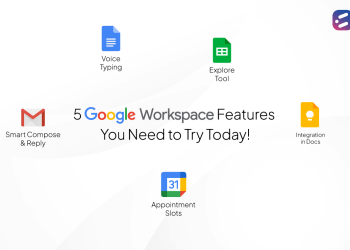SAP is an enterprise-grade ERP that covers almost every aspect of business management. Migrating your SAP workloads to the cloud can help your enterprise become more agile, expansive, and innovative.
SAP-to-cloud migration is a complex process that may involve significant hardware and software changes. Here’s our 8 step process to help you navigate your way through migrating your enterprise’s SAP to the cloud.
1. Assess your SAP environment
In order to achieve a successful IaaS (Infrastructure as a service) cloud migration, the complexity of your SAP workloads should be properly assessed, as should its underlying infrastructure, the requirements for seasonal elasticity, the size of each workload and related databases. Streamline, integrate, and optimize SAP workloads that are running on old hardware, that are seldom used, or are used by only a few people.
2. Define and establish the migration-architect role
Migration architecture involves planning, structuring, organizing, and completing all aspects of migration to the cloud. Before you begin the process, the migration architect role should be properly established; the core responsibility is to define necessary parameters in order to ensure the cloud migration is successful. The role also includes designing strategies for data migration, defining cloud solution requirements, determining migration priorities, and production switchover mechanisms.
During the course of a large-scale migration project, many technical plans and decisions are to be made; having a migration architect who understands and is responsible for all aspects of cloud migration is crucial for the success of the project.
3. Evaluate costs
Enterprises gravitate towards the cloud because of the promise of cost-efficiency. Cloud migrations help you bypass costs of maintaining hardware and IT staffing expenses. The financial benefits, however, differ for each application. Costs must be carefully evaluated and accounted for before the cloud migration process is in place. This would help your enterprise create a more effective and long-term cloud strategy.
4. Test your applications
Enterprises need to ensure that their SAP applications are completely functional before migrating to the cloud. Applications that run smoothly on dedicated servers prior to migration need not necessarily work at the same level of efficiency on cloud-based solutions. Migration can lead to instability, breakdowns, and performance degradation in legacy systems. Pre-migration testing is imperative; it helps you identify issues that must be resolved before a full-scale migration.
5. Migrate SAP to the Cloud
You need to have a detailed understanding of cloud migration strategies and how they can be successfully applied to your environment. Consider moving low-risk systems to the cloud. Building low business impact systems in the cloud can help you save money and help you optimize your new production environments.
6. Optimize SAP in the Cloud
Technology advances should be monitored. By properly integrating your SAP data with the cloud platform, you bring innovation and intelligence to your operations. Stay updated on new capabilities to receive the best possible benefits for your business and design for high availability in your production systems.
7. Manage SAP on the Cloud
Protecting sensitive data and the enterprise’s overall data security should be your top priority. When migrating SAP workloads, consider the various aspects of compliance and data security with regard to hosting data in the public cloud. Meet all application and data legal requirements through proper planning and execution. Work with the stakeholders and data owners for each application to comply with corporate and legal requirements.
Simple as the procedure for successful cloud migration may seem, the intricacies involved in each of the above stages can be quite complex. At CloudNow, we ensure that the migration of SAP workloads to the cloud and alignment of applications is seamless. Our robust skills ensure that movement to the cloud is hassle-free, comprehensively covering data mobility, data security, and a true DevOps approach to cloud migration and deployment. Successful SAP to cloud migration requires a coherent long-term strategy and effective management of workloads on the cloud: CloudNow is your reliable solution.
To know more, get in touch with us!














Great blog